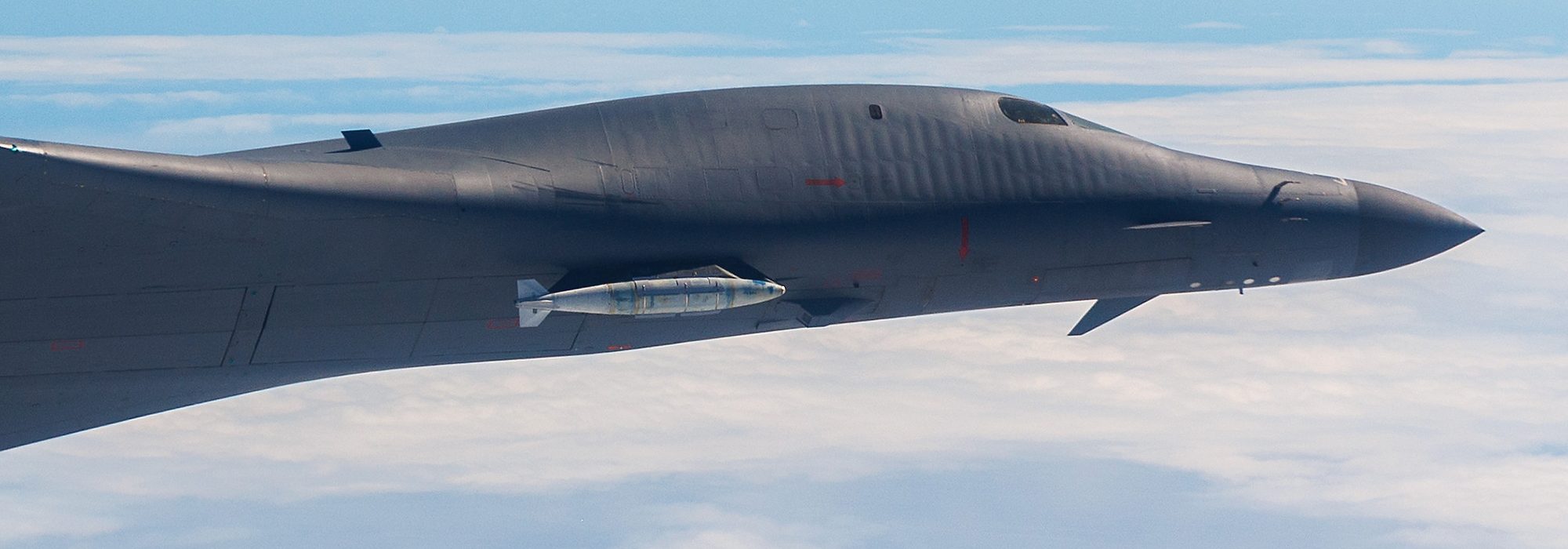New B-1 Pylon Creates ‘Hypersonic Testbed’
By John A. Tirpak
The Air Force has begun using a new Boeing pylon to test a variety of weapons on the B-1 Lancer, the 412th Test Wing announced in August, and now has a second way—besides the B-52—to test large weapons like hypersonic missiles.
The Load Adaptable Modular (LAM) pylon streamlines weapons tests because its modular attach points can be repositioned, reducing the need for unique pylons and making it possible to test weapons for which an appropriate pylon may not exist. Designers and testers liken it to a “Lego” pylon.
“We met the intent of Congress … and we now have a B-1 hypersonic testbed,” Joseph Stupic, senior materiel leader for the B-1 bomber division, told reporters at the Life Cycle Industry Days Conference in Dayton, Ohio, in August. Congress provided additional hypersonic testbed funds last year.
Boeing, which developed the LAM, envisioned the pylon as relieving the B-52 of hypersonic weapon assessments, as test B-52s are fully engaged with evaluating new engines, radars, communications systems, and navigation gear for its B-52J upgrade, as well as the AGM-181 Long-Range Standoff nuclear weapon.
Stupik said the Air Force has done a number of tests with the LAM so far, and it has “worked well.” Those included a 2,000-pound GBU-31 test in February, as well as “a bunch of flights” to qualify the LAM for the 5,000-pound GBU-72 Joint Direct Attack Munition advanced penetrator.
“We actually flew it behind a tanker to see what the handling qualities were with a large store on the outside” of a B-1, Stupik said.
Boeing built four LAMs, and Stupik said the Air Force has been using one at Edwards Air Force Base, Calif., where two B-1Bs are earmarked for flight test.
“We can put it on either one of the test jets out at Edwards. So it’s swappable right now,” he said.
“We’ve only qualified the one hard point,” which is in the location of a former external-carriage hardpoint originally meant for cruise missiles, “but we could put it on either test jet at Edwards,” Stupik said. The hardpoint seems to be the same location on which B-1s carry the AN/AAQ-33 Sniper AT targeting pod.
The LAM can accommodate weapons weighing up to 7,500 pounds, Boeing said in revealing the pylon to reporters at the Oklahoma Air Logistics Complex in May 2023.
The Air Force has seemingly stopped test-flying the large AGM-183 Air-Launched Rapid Response Weapon (ARRW), all the flights of which were made off a B-52, but has not yet begun heavy testing of the Hypersonic Attack Cruise Missile (HACM), a smaller, air-breathing missile meant to be carried by fighters.
At the time of the LAM’s unveiling, Boeing said a B-1 could carry 24 HACMs internally and 12 on LAMs mounted externally, for a loadout of 36 weapons. Likewise, it could carry 36 AGM-158 Joint Air-to-Surface Standoff Missiles (JASSMs) in the same configuration. The JASSM is physically and functionally similar to the Long-Range Anti-Ship Missile (LRASM), and Air Force officials have increasingly talked about the B-1 taking on an antishipping role in recent years.
According to an Edwards press release, “while the B-1B was chosen due to aircraft availability at Edwards, the LAM can be modified for attachment to a variety of other aircraft if the need were to arise.” The LAM is “one of several ways teams at Edwards are working with private industry to provide an innovative increase in test infrastructure.”
In recent years, insufficient test infrastructure has been pegged by the Government Accountability Office as one of the key limiting factors preventing the Air Force from speedier testing of a tsunami of new aircraft and weapons.
The LAM project “also gives test professionals valuable experience in applying engineering and analysis objectives that could be applied to future programs,” the Edwards release states.
